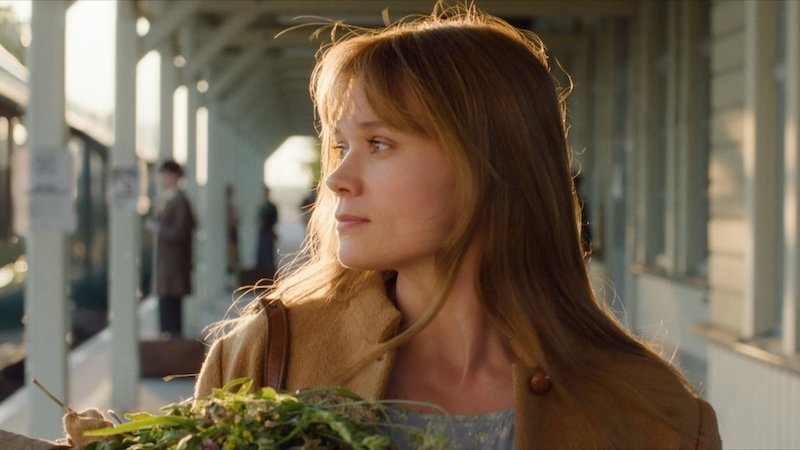









































LIVE FROM TALLINN
Discovering new and vital voices is essential for A-list events, which thrive on an international outlook and host tens of world and international premieres. The Black Nights Film Festival hosts the highly-acclaimed First Feature Competition, which features 11 films this year. Eight of these films are from Europe, and, according to their press kits, every single one of them received some combination of state, regional, or EU funding. This begs the question: how important is state funding for keeping European cinema alive, and – perhaps most crucially?can filmmakers succeed without it?
…
.
Can’t live if living is without… state funding
Triin Tramberg, lead programmer of the First Feature Film Competition, believes that “everybody needs state funding, unless you’re from the US where it’s all private, to get it going.” She estimates that on an Estonian level, “75% of funding should be from state money, then you find the rest from partners.”
National film funds distribute around two billion euros per year to support audiovisual creation while the European filmmaking eco-system is valued at €3 billion. A significant part of this is dedicated to first-time features. According to the European Audiovisual Observatory, “films with a budget of up to €3 million depend to a higher degree on direct public support, while films with higher budgets finance their production with proportionally higher shares of pre-sales and broadcaster investments.”
Public funding becomes more important for smaller budgets, “accounting for at least 33% up to 49% of the financing of films with a budget of less than €3 million” This drops to 26% for films with a budget between €3 and €10 million, and to 15% for films with budgets between €10 and €30 million.
This is true for the funding of the 100% Cypriot First Feature Competition entry Smaragda – I Got Thick Skin and I Can’t Jump (Emilios Avraam, 2024; pictured below) which was supported by Creative Europe Media and Cyprus Deputy Ministry of Culture. Producer Tonia Mishiali, who attended the 28th Tallinn Black Nights Film Festival, explains “we got funding from the Cyprus Deputy Ministry of Culture for script development in 2018 and in 2021 for development and production, alongside funding from Creative Europe Media in 2022 for development.” Creative Europe Media provided €45,000 of funding, while the Cyprus Deputy Ministry of Culture chipped in with €450,000. The rest of the €782,700 budget “was covered with deferrals and sponsorships.”
David Jovanović’s Serbian film Sun Never Again (2024), also in the First Feature competition, was, according to Jovanović, “initially conceived as a short film and received funding through a Film Center Serbia grant for student graduation projects.” But state funds rarely cover the entirety of a film, especially if it develops into something else. As it turned into a feature, he found that they had to fund the rest through unconventional means. This includes “selling sustainable ecosystems in jars, designer socks and now hand-painted second-hand clothes”.

This overall picture tracks with the statistics from The Numbers, which compiles box office and budget data from around the world, First-time directors are responsible for over 60% of films budgeted under half a million and 50% of films between half a million and a million, but only 25% of films between 5 and 10 million and just 15% of films between $10-20 million. This means that the trend is not confined to Europe. This is evidence that first-time directors worldwide are heavily reliant on state support.
This could be good news or bad news, depending on which country you work from. State funding allows for the films to get made, but also may require filmmakers to fulfill certain criteria, such as filming in a particular location, dealing with bureaucracy or fulfilling diversity and inclusion quotas. These cases differ depending on the fund, resulting in a complicated dance for filmmakers, especially for co-productions.
.
To first-timers with love
The good news is that many European states allocate money specifically for first-time directors. For example, writers, directors and producers new to BFI National Lottery funding are allocated 20% of the pile. This is also true in smaller film markets such as Estonia. Maria Ulfsak, Feature Film Commissioner at the Estonian Film Institute (EFI) explains that they support approximately four to six full-length feature films per year, with a “mission to ensure support for at least one debut feature annually”. This number increased significantly in 2023, supporting six out of seven debut films. This includes First Feature Competition entry Two of Me (Esko Brothers, pictured above, 2024), Rolling Papers (Meel Paliale, 2024), Fränk (Tõnis Pill, scheduled for 2025) and Our Erika (German Golub, 2025), as well as Something Real (Evar Anvelt, 2025) and Morten (Ivan Pavljutshkov, 2025) receiving funding this year. The number rises significantly in major markets: France released 64 first time films in 2022.
There is a similar picture in the documentary world. As Viola Salu, Head of the Documentary Film Commission (also from the Institute) states, “In 2024 EFI granted production support for eight feature length documentaries out of which three projects had first-time filmmakers. There are independently produced documentaries but the majority of feature-length documentaries were supported by the EFI, Kulka [Cultural; Endowment of Estonia], or both”.
.
Where do I begin?
Film festivals, particularly a-listers, remain a crucial springboard for nascent talent.
This is highlighted by the Berlinale’s announcement of a new programme, Perspectives, dedicated to fiction debuts and coming with a Best First Feature award. This follows programmes focussing on emerging talent around Europe, such as Un Certain Regard in Cannes, East of the West in Karlovy Vary, the main Competition at Transylvania International Film Festival, the recently announced New Directors at San Sebastian, the 1-2 Competition at Warsaw and Concorso Cineasti del Presente at Locarno. Nonetheless, before Berlinale’s announcement, Tallinn remains the only A-list film festival in Europe that has a competition programme exclusively for debuts, as opposed to first and second or first, second and third feature competitions.
In addition to the First Feature Competition, the Tallinn Black Nights has many events dedicated to emerging talents. A new initiative is the Tallinn Industry Academy, based on the Locarno Industry Academy, which is a programme for young professionals in the film circulation area. As Head Eda Koppel says, they work “with sales agents, people working in distribution, in exhibition, on VoD platforms, festival program teams and also institutions such as the Estonian Film Institute.” This is complemented by the Breaking into the Industry workshop, which offers mentorship opportunities for aspiring producers, with specific sessions for developing pitches that resonate with funding bodies. You can discover more industry opportunities by visiting the Industry@Tallinn Event page.

.
The odd one out
There are exceptions to the rule, with Helen Takkin’s Baltic Competition entry Life and Love (2024, pictured above) produced by Taska Film and Apollo Film without an EFI grant. Apollo Film can fill in where the state is lacking as they are the biggest film producer and distributor in the country, as well as the owners of the largest cinema chain (including Apollo Kino Coca-Cola Plaza, where the Black Nights takes place).
The fact they own the cinemas allows for vertical integration into the Estonian market and to boost box office numbers; it also helps that they have a track record of domestic successes and that Live and Love (Helen Takkin, 2024; pictured just above) is based on a popular novel by Estonian writer A. H. Tammsaare. But as Ulfsak states, “Such instances are rare but do occur. State funding plays a significant role in financing films in Estonia, but it is not the only path to making your debut”.
Nonetheless, the picture on the ground at Tallinn suggests that when it comes to debuts, state funding is still crucial, with a direct line between funds and the festival in terms of the movies being made and submitted for consideration. As Tramberg (pictured above) says, “We’re very grateful that we get along with so many film centres and film funds who send us films”.
.
The big picture
This belies the macro picture, where direct public funding is losing relevance. According to Film I Vast analysis, “The traditional public actors, film agencies, are losing importance and ‘power’. There are other faster and more efficient ways to get content made than via public funds.” Additionally, according to Agence Europe, in the United Kingdom and the EU, “funding is changing, with the share of direct public funding falling from 29.4% in 2016 to 24.0% in 2020.”
Where public funds are seeing cutbacks, streamers are also muscling in, with content spend in Europe jumping from $7.2 billion in 2022 to an estimated $10.6 billion this year. Netflix alone has spent around $115 million in Poland while also agreeing in 2022 to invest $34 million into French-language features. Nonetheless, it’s hard to establish whether these streamers are committed to supporting first-time directors in the same way that the state purse can. This reinforces the need for film funds and festivals alike to continue to support first-feature filmmakers, allowing new and vital voices to enter the cinematic conversation.
…
.
Pictured at the top: the team of The House With No Address (Hatice Askin), which is in the First Feature Competition at the 28th Tallinn. Black Nights Film Festival
This piece is a cross-publication in partnership with the Industry@Tallinn & Baltic Event.






